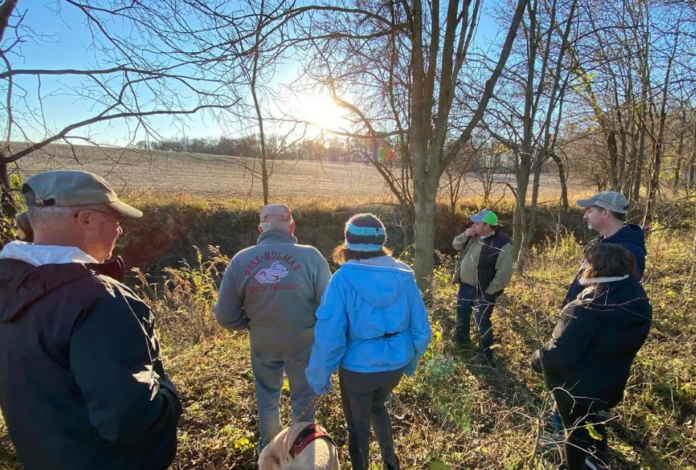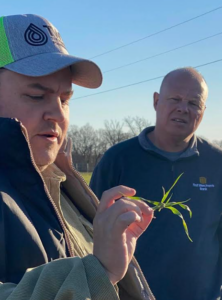
News Release
WARSAW — The Watershed Foundation recently hosted an afternoon tour to take a closer look at projects completed recently in the vicinity of Pierceton, showcasing the synergy between environmental stewardship and agricultural innovation.
The tour highlighted several successful recent partnership projects with local farmers, offering a firsthand look at collaborative efforts aimed at promoting sustainable practices and preserving the delicate ecological balance of the region.

The Watershed Foundation continues to build relationships with local farmers and linking with them to address environmental challenges within the watershed area. The tour provided an opportunity for community leaders and stakeholders to witness the positive impact of these collaborative projects.
“It’s one thing to talk with people about the incredibly important work The Watershed Foundation is able to do in partnership with local farmers – but seeing that work with our own eyes and talking to those with a personal understanding of the problems and solutions is invaluable,” said Lyn Crighton, executive director of The Watershed Foundation. “We feel it’s very important to help our supporters see and really understand what we’re trying to do.”
During the recent tour, attendees were able to see several critical projects and talk with watershed conservationist Brad Clayton about the projects completed in that area and walk through the steps required to make them happen.
“One of the standout projects involved the implementation of cover crops on farmlands. This sustainable agricultural practice helps prevent soil erosion, improve water quality, and enhance overall soil health,” said Crighton. “Brad (Clayton) talked about the positive outcomes observed since the adoption of cover crops.”
Walking along a field toward a ditch area, the tour also showcased ongoing efforts to stabilize stream banks in that area and within the watershed. “Through strategic partnerships, farmers have been implementing riparian buffer zones and other conservation practices to protect water quality and reduce sediment runoff,” added Crighton.
Additionally, the tour looked at a barn built to hold nutrient-rich manure that keeps it from washing downhill into a neighboring stream during rain and other precipitation events. Those in attendance seemed to enjoy the opportunity to see the projects up close and get answers to their questions along the way.
“Community engagement is an important aspect of what we’re doing when we tour the watershed,” said Crighton. “The discussions that happen during and because of the tours foster a sense of understanding and shared responsibility for the long-term sustainability of the watershed. We can look at the projects we’ve completed and begin to understand how it’s possible and necessary to do even more.”
Crighton shared that The Watershed Foundation hosts tours several times a year – typically in the spring and fall – to educate the community about the important projects and partnerships at work. The tours are usually about 1.5 to 2 hours in length and focus on different parts of The Watershed Foundation’s focus areas in Whitley, Noble and Kosciusko Counties.
For more information about joining a future watershed tour, contact admin@watershedfoundation.org or call (574) 834-3242.




